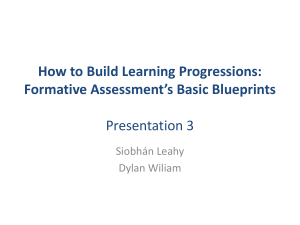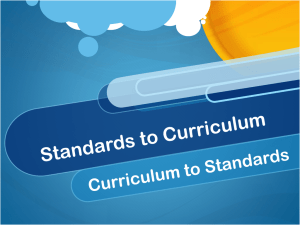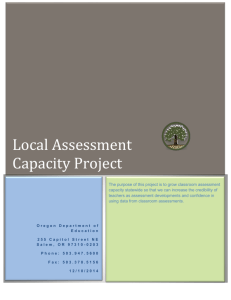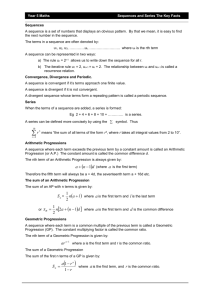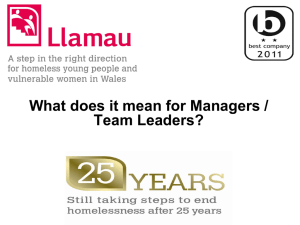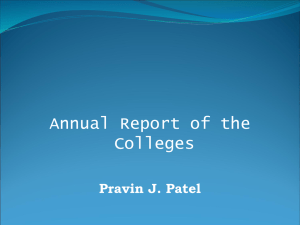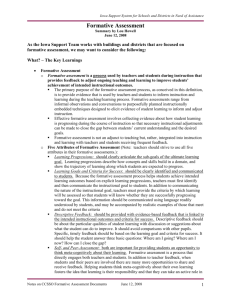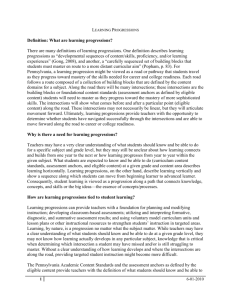14_LEARNING PROGRESSIONS
advertisement
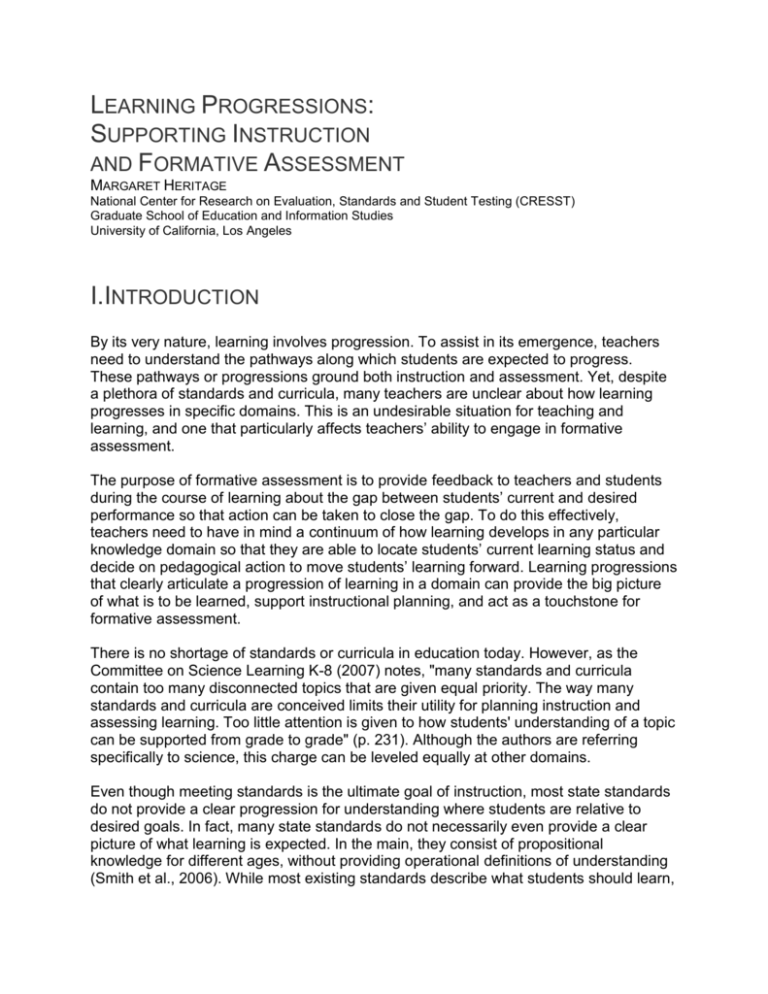
LEARNING PROGRESSIONS: SUPPORTING INSTRUCTION AND FORMATIVE ASSESSMENT MARGARET HERITAGE National Center for Research on Evaluation, Standards and Student Testing (CRESST) Graduate School of Education and Information Studies University of California, Los Angeles I.INTRODUCTION By its very nature, learning involves progression. To assist in its emergence, teachers need to understand the pathways along which students are expected to progress. These pathways or progressions ground both instruction and assessment. Yet, despite a plethora of standards and curricula, many teachers are unclear about how learning progresses in specific domains. This is an undesirable situation for teaching and learning, and one that particularly affects teachers’ ability to engage in formative assessment. The purpose of formative assessment is to provide feedback to teachers and students during the course of learning about the gap between students’ current and desired performance so that action can be taken to close the gap. To do this effectively, teachers need to have in mind a continuum of how learning develops in any particular knowledge domain so that they are able to locate students’ current learning status and decide on pedagogical action to move students’ learning forward. Learning progressions that clearly articulate a progression of learning in a domain can provide the big picture of what is to be learned, support instructional planning, and act as a touchstone for formative assessment. There is no shortage of standards or curricula in education today. However, as the Committee on Science Learning K-8 (2007) notes, "many standards and curricula contain too many disconnected topics that are given equal priority. The way many standards and curricula are conceived limits their utility for planning instruction and assessing learning. Too little attention is given to how students' understanding of a topic can be supported from grade to grade" (p. 231). Although the authors are referring specifically to science, this charge can be leveled equally at other domains. Even though meeting standards is the ultimate goal of instruction, most state standards do not provide a clear progression for understanding where students are relative to desired goals. In fact, many state standards do not necessarily even provide a clear picture of what learning is expected. In the main, they consist of propositional knowledge for different ages, without providing operational definitions of understanding (Smith et al., 2006). While most existing standards describe what students should learn, by a certain grade level “they do not describe how students learn in ways that are maximally useful for curriculum and instruction” (NRC, 2001:256). It is fair to say that if the standards do not present clear descriptions of how students learning progresses in a domain, then they are unlikely to be useful for formative assessment. Standards are insufficiently clear about how learning develops for teachers to be able to map formative assessment opportunities to them. This means that teachers are not able determine where student 3learning lies on a continuum, and know what to do to close the gap between current learning and desired goals. Explicit learning progressions can provide the clarity that teachers need. By describing a pathway of learning they can assist teachers to plan instruction. Formative assessment can be tied to learning goals and the evidence elicited can determine students’ understanding and skill at a given point. When teachers understand the continuum of learning in a domain and have information about current status relative to learning goals (rather than to the activity they have designed to help students meet the goal), they are better able to make decisions about what the next steps in learning should be. (Continued) This progression of learning allows teachers to position their students' learning, not only in relation to their current class(es) and the objectives for that cohort, but also in relation to prior and subsequent classes. Consequently, teachers are able to view current learning against a bigger picture of development. In terms of instruction, they are able to make connections between prior and successive learning. Also, information from formative assessment can be used to pinpoint where students’ learning lies on the continuum. Sometimes this will mean that teachers have to move backwards along the continuum, for example, if key building blocks are missing. Similarly, they might move learning further forward if some students are outpacing their peers. In both cases, the continuum allows them to make an appropriate match between instruction and the learners' needs. What Is a Learning Progression? A learning progression is a sequenced set of subskills and bodies of enabling knowledge that, it is believed, students must master en route to mastering a more remote curricular aim. In other words, it is composed of the step-by-step building blocks students are presumed to need in order to successfully attain a more distant, designated instructional outcome. The more "distant" instructional outcome, known as the target curricular aim, is typically a skill (rather than a body of knowledge) and usually a significant skill at that—the kind of learning outcome requiring a number of lessons for students to achieve it. An example of such a skill in, say, science or social studies would be students' abilities to appropriately portray complex sets of data in tables, figures, or graphs. In mathematics, a target curricular aim might call for students to be able to arrive at suitable solutions to real-world word problems requiring the use of two or more mathematical operations. Although most learning progressions are built toward highlevel cognitive skills such as the examples I've mentioned, they can also be designed to identify the building blocks underlying the acquisition of psychomotor skills, for example, small-muscle skills such as keyboarding or large-muscle skills such as pole vaulting. Within a learning progression, a body of enabling knowledge is a set of facts or information the student must memorize or understand. If the target curricular aim is composing a persuasive essay, for example, the enabling knowledge would include a collection of generally approved word-usage rules. A subskill in a learning progression is usually a cognitive skill that, though lesser in scope or importance than that called for in a target curricular aim, is regarded as necessary before a student can master that more advanced cognitive skill. Examples of subskills for essay writing would include students' ability to (1) properly organize the essay's content and (2) create an attentionarresting opening paragraph. Finally, the historically minded among you and those inclined to read further on the topic may be interested to know that several decades ago the typical label used when describing such collections of sequenced building blocks was a task analysis. More recently, Australian researchers have identified these same building-block sequences as progress maps (Forster & Masters, 1996). Because many educators find it easier to work with graphically portrayed learning progressions than with verbally described learning progressions, please consider Figure 2.1. In that figure you will see a set of building blocks—subskills (circles) and bodies of enabling knowledge (squares)—to be achieved by students on their way to mastering a target curricular aim (the rectangle at the top of the sequence). The five building blocks are sequenced to indicate the order in which the learning progression's designer (often a teacher) believes students should achieve them. Figure 2.1's manner of depicting a learning progression as a vertical sequence is typical of the way most learning progression are illustrated graphically, but you will sometimes see them set up horizontally, from left to right, as in Figure 2.2. One of the advantages of a horizontal representation is that it's easy to insert the projected amount of instructional time needed for each building block according to the actual dates of instruction and numbers of lessons planned. Figure 2.1. A Learning Progression Model Figure 2.2. A Horizontal Learning Progression Model with Lesson-Number Estimates Why are learning progressions so pivotal in the successful implementation of formative assessment? They are the backdrop against which teachers and students can determine when to collect what sort of evidence regarding students' current status. They provide a framework that helps teachers identify appropriate adjustment-decision points as well as the kinds of en route assessment evidence they need.
